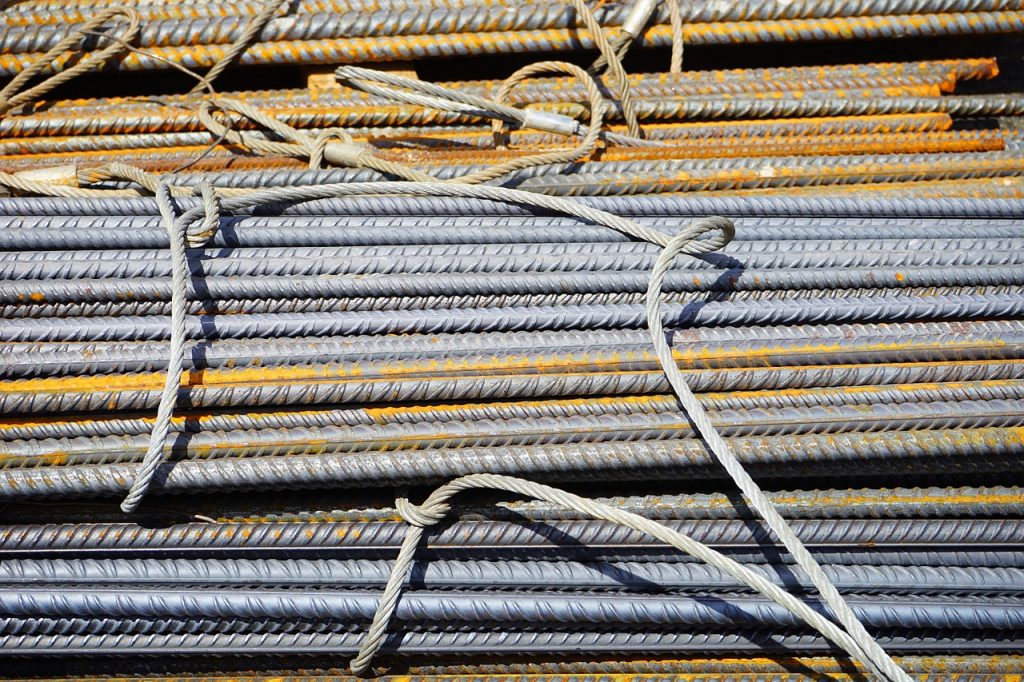TMT is the abbreviation for “Thermo-Mechanically Treated” which denotes a unique process of cooling down steel bars from their molten state with rapidity. This is accomplished by spraying water at periodic intervals. This cooling interval criterion determines the distinctive characteristics and grades of TMT bars.
In this context, the main objective is to create a hard and solid exterior surface with a more flexible interior coating. The external shell is covered with a protective layer which makes the bar impervious to rust and corrosion. This also makes TMT bars appropriate in the construction of complex, delicate structures like high-rises and bridges, especially in humid climatic conditions.
To begin with, TMT bars are far more superior to conventional steel bars. The grades of TMT bars are determined in accordance with their strength and firmness.
The 4 essential grades of TMT bars are classified below.
- Fe 415 – Because of its uniform elongation, it’s the ideal choice of most homeowners. Therefore, it’s typically used to construct homes and residential structures. The higher degree of elongation makes it perfect to build structures in areas prone to earthquakes. Furthermore, because of their auxiliary anti-resistance coating, Fe 415 bars offer excellent resilience to rust and corrosion.
- Fe 500 – Endowed with high resistance to corrosion and dynamic loading and impressive bendability Fe 500 is a versatile TMT bar that’s widely known because of its different applications in big RCC constructions like buildings, bridges, multi-storeyed commercial complexes and underground structures.
- Fe 550 – Its properties are similar to Fe 500. The differentiators that set it apart are the yield and tensile strength. Fe 550 comes of good use in comparison with Fe 500 when the scale of the project is marginally bigger for the latter to handle. This TMT is commonly used in RCC construction in zones which are exposed to coastal or marine settings and underground environment.
- Fe600 – It’s blessed with tremendous toughness and offers top-quality yield and tensile strength when compared to other TMT grades. Thus, because of its inherent robustness, it finds sizeable usage in huge RCC constructions.
Gradations of TMT bars are very specific and done contingent on factors like:
- Chemical compositions
- Physical properties
- Heat treatments
- Fabrication processes and forms
Physical properties:
The physical and mechanical properties of TMT steel are principally characterized by properties namely tensile strength, yield stress and elongation of the ultimate product. The eventual grade of steel is governed by the values of these three determinants. They also enable users to choose the grade that best meets their requirements.
Chemical composition:
TMT steel products are bestowed with various chemical properties to fulfill diverse application needs. Grading is used to distinguish steel types depending on these intrinsic chemical properties. Different alloys play a crucial role in determining TMT’s final chemical characteristics. These take in several percentages of carbon, sulfur, phosphorous, manganese, etc. to define TMT grades applicable for different purposes.
Manufacturing process:
The process of manufacturing a TMT steel product along with the temperature and timelines controls its ultimate physical and chemical properties. A range of processes is embarked upon to produce steel qualified and graded with variations. For instance, hot-forming TMT steel rods have enhanced ductility and malleability. On the contrary, cold-rolling adds in more brittleness.


